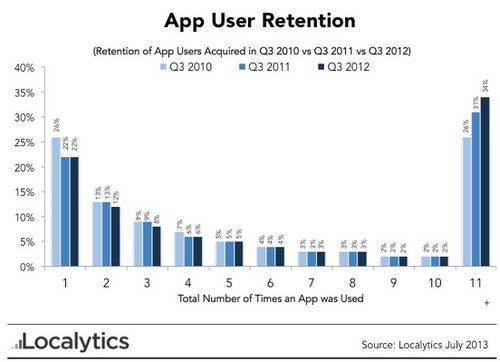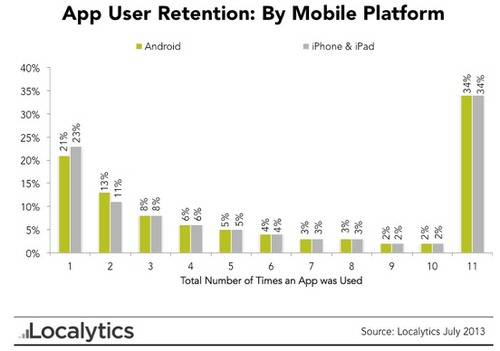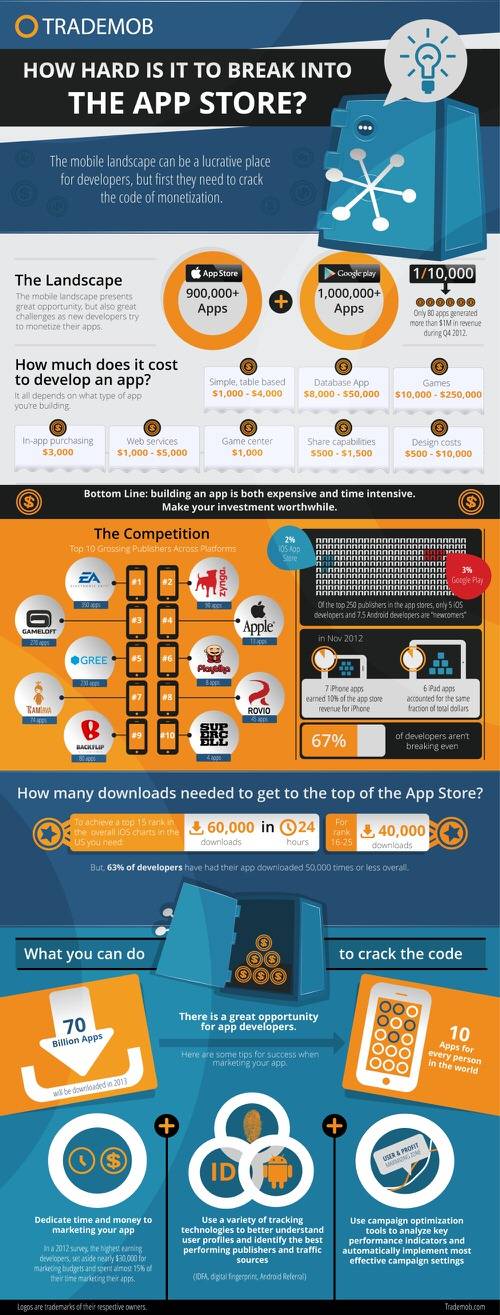You just spent months building an app with the hopes that it would be a boon for your business or usher your way into the lucrative world of top end app publishers. You have Candy Crush dreams and Evernote aspirations.
After you publish your app, nobody downloads it. Those that do download it aren’t coming back into it more than once or twice.
“This sucks,” you tell yourself over your morning (and afternoon) Ramen noodles.
See also Making Android Pay: 5 Tips To Topping The Charts On Google Play
Making noise in the App Store and Google Play is harder than ever. At last count, Apple has more than 900,000 apps in the App Store while Google boasts more than one million in its Android market. Even if you have the chops to develop an app and push it out, the competition is fierce for mobile users’ time, attention… and dollars.
Nearly two-thirds of developers do not break even with their app investments. Most apps average much less than 50,000 downloads (which may seem like a lot, but it is not the peak of app store performance).
Gross downloads are not always a sign of success. If one million people download your app but only use it once, that is also a failure of execution and retention. According to data from mobile analytics and marketing firm Localytics, 66% of app users open apps between one and 10 times. Only about 34% of users open an app 11 or more times, as of the third quarter of 2012 (and that number is up from 26% for the same time in 2011).

Getting app downloads and increasing user retention is a problem for every app publisher, from the indie developer to big, established brands to the current flavor of the month (think Angry Birds, Candy Crush, Temple Run).
Even though the incumbents in the App Store and Google Play have the same type of problems that many other app publishers face, they also have mastered the art of acquiring and retaining users. Hence, they hold the keys to the house that are the top rankings in the app stores. According to analytics company Trademob, only 2% of the top 250 app publishers in the Apple App Store are newcomers while only 3% are new to Android’s Google Play store.

What is your apps problem? Foremost, it may be low on signal and high on noise (it is not original and just not good enough). Really, there a lot of apps and many, many of them are just not that good. A generic game or brand app can get lost in the nearly two million entrants between the two stores. Second, the environment for mid-market apps is really, really thin. Only one in every 10,000 apps generated more than $1 million in the fourth quarter of 2012, according to Trademob.
Third, you probably do not have the money to compete with the top of the heap of the app stores where all the money is made. Top app publishers have large marketing budgets and teams dedicated to nothing but getting their app seen (through public relations campaigns, advertising or cross promotion to social networks, television and other apps).

Even if your app is not generating hundreds of thousands to millions of downloads, there are things you can do to hold to the users you do have. Localytics offers three tips for retaining and engaging app users after they have downloaded your app.
- Optimize customer acquisition: Tie customer acquisition sources (e.g., Facebook ads, cross promotion) to the long-term retention, conversion rates and most importantly lifetime value of app users. This focus shifts acquisition resources to those providing the highest quality customers.
- Engage / nurture customers: Use tools such as in-app messaging to communicate with customers within the app. You can provide special offers, nudge customers through conversion points (e.g., registrations) and request customer feedback as input to app development.
- Continuous improvement: Use app analytics to discover opportunities to continuously improve the app experience, remove bottlenecks, smooth app user flow and move popular content and features forward.
Check out the infographic below from Trademob on app downloads and the difficulty in breaking into the top ranks in the app stores.










